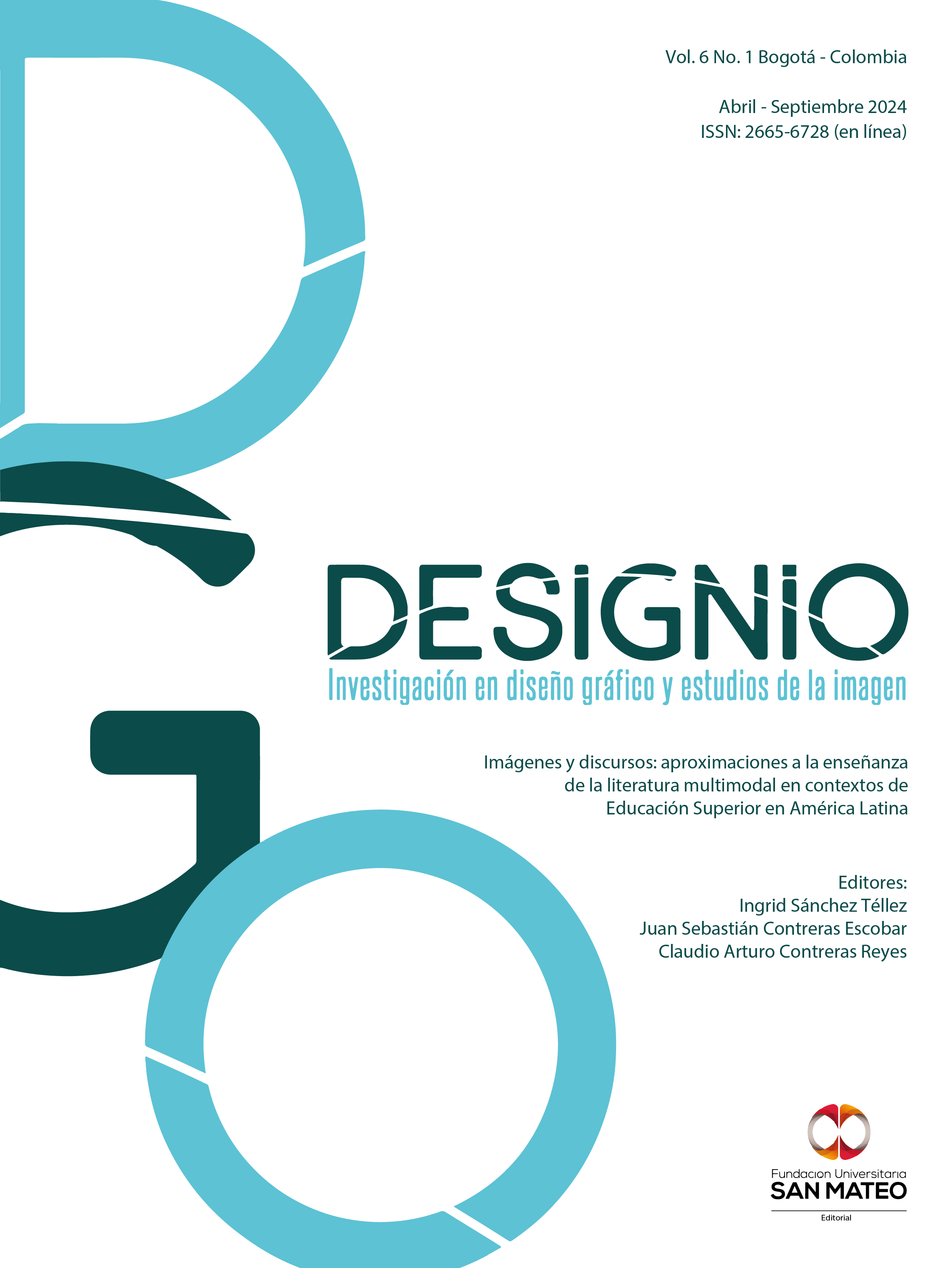Landscape and Places in Cartoon Films on Video on Demand Context and Geography in Digital Creation System
Main Article Content
Abstract
Due to the evolution of Computer Generated Images (CGI) and 3D software, the animation industry has led digital images and landscapes to a photographic result closer to reality. A fact that makes us consider what the treatment of these supposed contexts and locations is related to the main producer (Disney). However, the pandemic situation of covid-19 has made the company release its products destined for movie theaters, into a new context and space of understanding, such as Disney+. This study tries to focus on the meaning of the apprehension and development of landscapes and geographic contexts by Disney+. It analyses the films generated between 2020-2021 to compare the aesthetic results in the different contexts represented by the digital platform.
Downloads
Article Details

This work is licensed under a Creative Commons Attribution-NonCommercial-NoDerivatives 4.0 International License.
References
Aguado, D. y Martínez, P. (2015). ¿Se ha vuelto Disney feminista? Un nuevo modelo de princesas empoderadas. Área Abierta, 15(2), 49-61. https://doi.org/10.5209/rev_ARAB.2015.v15.n2.46544
Anderton, E. (2020, junio 18). Details on Disney’s New Animated Movie ˝Encanto ˝ from ˝Zootopia˝ Directors Come to Light. Film. https://web.archive.org/web/20200620185840/https://www.slashfilm.com/details-on-disneys-new-animated-
movie-encanto-from-zooptopia-directors-come-to-light/
Augé, M. (1993). Los “no lugares”. Espacios del anonimato: una antropología de la sobremodernidad. Gedisa.
Barker, C. & Wiatrowski, M. (Eds.). (2017). The Age of Netflix: Critical Essays on Streaming Media, Digital Delivery and Instant Access. McFarland & Company.
Barral, C. y Forcel, J. (1995). Disney mania. Cinemanía, 2, 156-157.
Bauman, Z. (2013). Vida líquida. Austral.
Boden, A. y Fleck, R. (2019). Capitana Marvel [Película]. Marvel Studios.
Bolter, J. (2019). The Digital Plenitude: The Decline of Elite Culture and the Rise of New Media. Cambridge. MIT Press.
Carande, A. (2021). Macondo revisitado. Cinemanía, (314), 42-42.
Caro, N. (Director). (2020). Mulán [Película]. Walt Disney Pictures, Walt Disney Feature Animation.
Casarosa, E. (Director). (2012). La luna [Cortometraje]. Walt Disney Pictures, Pixar Animation Studios.
Casarosa, E. (Director). (2021). Luca [Película]. Walt Disney Pictures, Pixar.
Cooley, J. (Director). (2019). Toy Story 4 [Película]. Walt Disney Pictures, Pixar Animation Studios.
Condon, B. (Director). (2017). La bella y la bestia [Película]. Walt Disney Pictures, Mandeville Films.
Cuenca, N. y Martínez, N. (2021). La evolución de la masculinidad en Disney a través de La Bella y La Bestia de la versión animada de Kirk Wise y Gary Trousdale (1991) a la de acción real de Bill Condon (2017). Ex aequo, (43), 31-47.
Deig, J. y Roura, M. (2021, abril 11). Las plataformas de streaming representan ya una cuarta parte del mercado televisivo. El Diario de la Educación. https://eldiariodelaeducacion.com/educacion-en-redes-y-tecnologia/2021/04/11/las-plataformas-de-streaming-representan-ya-una-cuarta-parte-del-mercado-televisivo/
Delgado, M. (2015). Urban Youth and Photovoice: Visual Ethnography in Action. Oxford University Press.
Docter, P. y Powers, K. (Directores). (2020). Soul [Película]. Walt Disney Pictures, Pixar Animation Studios.
Favreau, J., Logar, J y Calderón, J. (Directores). (2016). El libro de la selva [Película]. Walt Disney Pictures, Fairview Entertainment.
Favreau, J., Silver, J. y Gilchrist, J. (Director). (2019). El rey león [Película]. Walt Disney Pictures, Moving Picture Company.
Feser, M. (2020, diciembre 14). Disney’s Encanto Animated Movie Release Date Announced. Screen Rant. https://web.archive.org/web/20201219081552/https://screenrant.com/encanto-movie-release-date-2021-disney/
Fontcuberta, J. (2015). La caja de Pandora. La fotografí@ después de la fotografía. GG. García-Ergüín, M. (2014). El síndrome de la espectacularización de la imagen digital en el cine actual: manierismo cinematográfico. Revista Internacional de Cultura Visual, 1(2), 1-9. https://doi.org/10.37467/gka-revvisual.v1.639
Garrocho, D. (2019). Sobre la nostalgia. Alianza.
Giroux, H. (1999). The Mouse that Roared: Disney and the End of Innocence. Rowman & Littlefield Publishers.
Han, Byung-Chul (2018). Hiperculturalidad. Herder.
Hegel, G. W. F. (2007). Lecciones sobre estética. Akal.
Howard, B., Bush, J. y Castro, C. (Directores). (2021). Encanto [Película]. Walt Disney Pictures, Walt Disney Animation Studios.
Jenner, M. (2018). Netflix and the Re-invention of Television. Palgrave McMillan. https://doi.org/10.1007/978-3-319-94316-9
Jullien, F. (2017). La identidad cultural no existe. Taurus.
Keane, G. y Kahrs, J. (Directores). (2020). Más allá de la luna [Película]. Pearl Studios.
Lazarus, D. (2021, septiembre 11). Columna: a medida que aumenta el precio de Hulu, ¿cuánto es demasiado para un servicio de ‘streaming’? Los Angeles Times. https://www.latimes.com/espanol/eeuu/articulo/2021-09-11/hulu-streaming-servicio-precios
Leiva, E. y González, L. (2000). Análisis de “El Rey León”. La “disneynalización” social. Comunicar: Revista Científica de Comunicación y Educación, (14), 145-152. https://doi.org/10.3916/C14-2000-20
Lipovetsky, G. y Serroy, J. (2009). La pantalla global. Cultura mediática y cine en la era hipermoderna. Anagrama.
López Estrada, C. y Hall, D. (Directores). (2021). Raya y el último dragón [Película]. Walt Disney Pictures, Walt Disney Animation Studios.
Manovich, L. (2021). The Language of New Media. The MIT Press.
Martín, J. (2008). La creatividad de la multitud conectada y el sentido del arte en el contexto de la Web 2.0. Estudios Visuales: Ensayo, Teoría y Crítica de la Cultura Visual y el Arte Contemporáneo, (5), 66-79.
Martín, S. y García-Ergüín, M. (2019). Disrupciones en las narraciones generacionales. Adaptaciones argumentales en las franquicias cinematográficas para su perpetuación. En J. Sierra y Lavín, J. (Coords.), Redes sociales, tecnologías digitales y narrativas interactivas en la sociedad de la información (pp. 533-556). McGraw-Hill.
Mason, J. (1996). Qualitative Researching. Sage.
McClintok, P. (2020, octubre 8). Pixar’s ‘Soul’ Bypasses Theaters, Sets Disney+ Christmas Debut. The Hollywood Reporter. https://www.hollywoodreporter.com/movies/movie-news/pixars-soul-bypasses-theaters-sets-disney-christmasdebut-
/
Orús, A. (2024, febrero 20). Número de abonados de plataformas de vídeo en streaming seleccionadas España. Statista. https://es.statista.com/estadisticas/1043679/numero-de-abonados-de-plataformas-de-video-en-streaming-espana/
Ritchie, G. (Director). (2019). Aladdín [Película]. Walt Disney Pictures, Lin Pictures, Marc Platt Productions.
Russo, A. y Russo, J. (Directores). (2019). Avengers: Endgame [Película]. Marvel Studios.
Scanlon, D. (Director). (2020). Onward [Película]. Walt Disney Pictures, Pixar Animation Studios.
Shi, D. (Director). (2018). Bao [Cortometraje]. Walt Disney Pictures; Pixar Animation Studios.
Tefertiller, A. y Sheehan, K. (2019). TV in the Streaming Age: Motivations, Behaviors, and Satisfaction of Post-Network Television. Journal of Broadcasting & Electronic Media, 63(4), 595-616. https://doi.org/10.1080/08838151.2019.1698233
Vacas-Aguilar, F. (2021). El mercado del vídeo en streaming: un análisis de la estrategia de Disney+. Profesional de la Información, 30(4). https://doi.org/10.3145/epi.2021.jul.13
Unkrich, L. y Molina, A. (Directores). (2017). Coco [Película]. Walt Disney Pictures; Pixar Animation Studios.

